Plant Adaptations
Adaptations and tropism powerpoint
Video Tropism Video Mind of Plants
Tropism Video
Adaptations and tropism powerpoint
Video Tropism Video Mind of Plants
Tropism Video
What are some plant adaptations?
Angiosperms, or flowering plants, have scented flowers that attract certain pollinators. They have leaves that catch sunlight and roots that soak up water. These and other adaptations help plants survive.
Some plants have specific structural adaptations to different environments. For example, rain-forest plants, such as orchids, have adaptations that help them survive wet, hot conditions.
Orchid stems have storage organs called pseudobulbs (SEW•doh•bulbz). They store water for the plant. An orchid’s aerial roots help secure it high in a rain-forest tree. These roots also absorb water from the moist air. Like many rain-forest plants, orchids have drip-tip leaves. These leaves are adapted to the constant wet conditions in a rain forest. Their tips drain excess water.
Plants such as cacti that live in hot and dry environments have thick, waxy stems that prevent water loss. They have very dense, shallow roots that soak up rain quickly. Plants that live in forests, such as oak trees, lose their leaves in the winter. This helps them prevent water loss. Cold climate plants, such as moss, are able to complete their life cycle in a shortened growing season. Some aquatic plants, such as water lilies, have stomata, or pores, on the top surface of the leaf instead of the bottom. This enables the stomata to take in and release carbon dioxide and oxygen.
Many plants have adaptations that defend them from herbivores. For example, some plants produce chemicals that give them a bad taste. When most herbivores eat the leaves, they do not like the taste and stop eating the plant. Other plants, such as milkweeds, produce chemicals that are poisonous to most animals. Both of these adaptations protect the plants from herbivore.
Plant adaptations
Plant root adaptations:
1. Adventitious roots = roots arising from non-root origins
a) Prop roots = absorb water and minerals and supports the shoot system. (corn, mangrove
tree)
2. Edible roots: storage of carbohydrates and water. (carrots and sweet potato)
3. Parasitic roots = relationship between two species in which one benefits while the other is
harmed. (mistletoe, indian pipe)
4. Contractile roots = pull the shoot tight to the soil surface. (dandelion and water hyacinth) Plant Stem adaptations:
1. Rhizomes = underground perennial (all year round) stems. (lily, various ferns)
2. Tubers = enlarged terminal portions of underground rhizomes. (potato)
3. Corms = a swollen underground stem base that is modified into a mass of storage tissue.
(Gladiolus)
4. Stolons = above ground horizontal stems, also called runners. (strawberry plant)
5. Thorns originate from the axils of leaves. Function to protect the plant from predators
6. Succulent, photosynthetic stems store water.
7. Parasitic stems strangle other plants.
Plant leaf adaptations:
1. Spines = modified leave (various cactuses)
2. Prickles = modified clusters of epidermal cells (rose stems)
3. Tendrils = modified leaves that wrap around things and support the shoots
4. Bulb = an underground mass of fleshy storage leaves. (onion)
5. Some leaves produce plantlets that develop into entire plant (Kalanchoe plant)
6. Insectivorous plants (Venus’ fly trap, sundews, pitcher plant)
Plant adaptations to environmental extremes:
1. Drought = dry atmosphere or soil
a) Xerophytes = plants that grow successfully in very dry climates. Thick cuticle. Leaves
conserve/store water.
2. Flooding = water table is above the soil surface
a) Gas exchange (O2 for respiration in the roots) cannot take place since soil air pockets are
filled with water
b) Adventitious roots and aerenchyma cells (cells with wide open spaces) allow O2 to
move into the plant for respiration to occur. (Rice)
3. Saline (salty) soils.
a) Halophytes = are salt tolerant plants found near ocean bays etc.
b) Glycophytes = non-salt tolerant plants.
A Meat-Eating Plant?
Venus flytraps have leaves that look like jaws. The leaves close only when a stimulus, such as a fly, brushes against tiny, sensitive hairs on the surface of the leaves. To what other stimuli do you think plants might respond?
Stimuli and Plant Responses
Have you ever been in a dark room when someone suddenly turned on the light? You might have reacted by quickly shutting or covering your eyes. Stimuli (STIM yuh li; singular, stimulus) are any changes in an organism’s environment that cause a response.
Often a plant’s response to stimuli might be so slow that it is hard to see it happen. The response might occur gradually over a period of hours or days. Light is a stimulus. A plant responds to light by growing toward it, as shown in Figure 1. This response occurs over several hours.
In some cases, the response to a stimulus is quick, such as the Venus flytrap’s response to touch. When stimulated by an insect’s touch, the two sides of the trap snap shut immediately, trapping the insect inside.
1.  Reading Check Why is it sometimes hard to see a plant’s response to a stimulus?
Reading Check Why is it sometimes hard to see a plant’s response to a stimulus?
 Reading Check Why is it sometimes hard to see a plant’s response to a stimulus?
Reading Check Why is it sometimes hard to see a plant’s response to a stimulus?
Environmental Stimuli
When it is cold outside, you probably wear a sweatshirt or a coat. Plants cannot put on warm clothes, but they do respond to their environments in a variety of ways. You might have seen trees flower in the spring or drop their leaves in the fall. Both are plant responses to environmental stimuli.
Growth Responses
Plants respond to a number of different environmental stimuli. These include light, touch, and gravity. A tropism (TROH pih zum) is a response that results in plant growth toward or away from a stimulus. When the growth is toward a stimulus, the tropism is called positive. A plant bending toward light is a positive tropism. Growth away from a stimulus is considered negative. A plant’s stem growing upward against gravity is a negative tropism.
Light
The growth of a plant toward or away from light is a tropism called phototropism. A plant has a light-sensing chemical that helps it detect light. Leaves and stems tend to grow in the direction of light, as shown in Figure 2. This response maximizes the amount of light the plant’s leaves receive. Roots generally grow away from light. This usually means that the roots grow down into the soil and help anchor the plant.
1.  Reading Check How is phototropism beneficial to a plant?
Reading Check How is phototropism beneficial to a plant?
 Reading Check How is phototropism beneficial to a plant?
Reading Check How is phototropism beneficial to a plant?
Figure 2 As a plant’s leaves turn toward the light, the amount of light that the leaves can absorb increases.
Touch
The response of a plant to touch is called a thigmotropism (thihg MAH truh pih zum). You might have seen vines growing up the side of a building or a fence. This happens because the plant has special structures that respond to touch. These structures, called tendrils, can wrap around or cling to objects, as shown in Figure 3. A tendril wrapping around an object is an example of positive thigmotropism. Roots display negative thigmotropism. They grow away from objects in soil, enabling them to follow the easiest path through the soil.
The response of a plant to touch is called a thigmotropism (thihg MAH truh pih zum). You might have seen vines growing up the side of a building or a fence. This happens because the plant has special structures that respond to touch. These structures, called tendrils, can wrap around or cling to objects, as shown in Figure 3. A tendril wrapping around an object is an example of positive thigmotropism. Roots display negative thigmotropism. They grow away from objects in soil, enabling them to follow the easiest path through the soil.
Figure 3 The tendrils of the vine respond to touch and coil around the blade of grass.
Gravity
The response of a plant to gravity is called geotropism. Stems grow away from gravity, while roots grow toward gravity. The seedlings in Figure 4 are exhibiting both responses. No matter how a seed lands on soil, when it starts to grow, its roots grow down into the soil. The stem grows up. This happens even when a seed is grown in a dark chamber, indicating that these responses can occur independently of light.
The response of a plant to gravity is called geotropism. Stems grow away from gravity, while roots grow toward gravity. The seedlings in Figure 4 are exhibiting both responses. No matter how a seed lands on soil, when it starts to grow, its roots grow down into the soil. The stem grows up. This happens even when a seed is grown in a dark chamber, indicating that these responses can occur independently of light.
2. Key Concept Check What types of environmental stimuli do plants respond to? Give three examples.
Figure 4 Both of these plant stems are growing away from gravity. The upward growth of a plant’s stem is negative geotropism, and the downward growth of its roots is positive geotropism.
 Visual Check How is the plant on the left responding to the pot begin placed on its side?
Visual Check How is the plant on the left responding to the pot begin placed on its side?
Flowering Responses
You might think all plants respond to light, but in some plants, flowering is actually a response to darkness! Photoperiodism is a plant’s response to the number of hours of darkness in its environment. Scientists once hypothesized that photoperiodism was a response to light. Therefore, these flowering responses are called long-day, short-day, and day-neutral and relate to the number of hours of daylight in a plant’s environment.
Long-Day Plants Plants that flower when exposed to less than 10–12 hours of darkness are called long-day plants. The carnations shown in Figure 5 are examples of long-day plants. This plant usually produces flowers in summer, when the number of hours of daylight is greater than the number of hours of darkness.
Short-Day Plants Short-day plants require 12 or more hours of darkness for flowering to begin. An example of a short-day plant is the poinsettia, shown in Figure 5. Poinsettias tend to flower in late summer or early fall when the number of hours of daylight is decreasing and the number of hours of darkness is increasing.
Day-Neutral Plants The flowering of some plants doesn’t seem to be affected by the number of hours of darkness. Day-neutral plants flower when they reach maturity and the environmental conditions are right. Plants such as the roses in Figure 5 are day-neutral plants.
3.  Reading Check How is the flowering of day-neutral plants affected by exposure to hours of darkness?
Reading Check How is the flowering of day-neutral plants affected by exposure to hours of darkness?
 Reading Check How is the flowering of day-neutral plants affected by exposure to hours of darkness?
Reading Check How is the flowering of day-neutral plants affected by exposure to hours of darkness?
Figure 5 The number of hours of darkness controls flowering in many plants. Long-day plants flower when there are more hours of daylight than darkness, and short-day plants flower when there are more hours of darkness than daylight.
 Visual Check What time of year receives more darkness, and what type of plant produces flowers during that season?
Visual Check What time of year receives more darkness, and what type of plant produces flowers during that season?
Chemical Stimuli
Plants respond to chemical stimuli as well as environmental stimuli. Plant hormones are substances that act as chemical messengers within plants. These chemicals are produced in tiny amounts. They are called messengers because they usually are produced in one part of a plant and affect another part of that plant.
Auxins
One of the first plant hormones discovered was auxin (AWK sun). There are many different kinds of auxins. Auxins generally cause increased plant growth. They are responsible for phototropism, the growth of a plant toward light. Auxins concentrate on the dark side of a plant’s stem, and these cells grow longer. This causes the stem of the plant to grow toward the light, as shown in Figure 6.
Ethylene
The plant hormone ethylene helps stimulate the ripening of fruit. Ethylene is a gas that can be produced by fruits, seeds, flowers, and leaves. You might have heard someone say that one rotten apple spoils the whole barrel. This is based on the fact that rotting fruits release ethylene. This can cause other fruits nearby to ripen and possibly rot. Ethylene also can cause plants to drop their leaves.
1. Key Concept Check How do plants respond to the chemical stimuli, or hormones, auxin and ethylene?
Gibberellins and Cytokinins
Rapidly growing areas of a plant, such as roots and stems, produce gibberellins (jih buh REL unz). These hormones increase the rate of cell division and cell elongation. This results in increased growth of stems and leaves. Gibberellins also can be applied to the outside of plants. As shown in Figure 7, applying gibberellins to plants can have a dramatic effect.
Root tips produce most of the cytokinins (si tuh KI nunz), another type of hormone. Xylem carries cytokinins to other parts of a plant. Cytokinins increase the rate of cell division, and in some plants, cytokinins slow the aging process of flowers and fruits.
Summary of Plant Hormones
Plants produce many different hormones. The hormones you have just read about are groups of similar compounds. Often, two or more hormones interact and produce a plant response. Scientists are still discovering new information about plant hormones.
Humans and Plant Responses
Humans depend on plants for food, fuel, shelter, and clothing. Humans make plants more productive using plant hormones. Some crops now are easier to grow because humans understand how they respond to hormones. As you study Figure 8, make a list of all the ways humans can benefit from understanding and using plant responses.
1.  Reading Check How are humans dependent on plants?
Reading Check How are humans dependent on plants?
 Reading Check How are humans dependent on plants?
Reading Check How are humans dependent on plants?
Lesson Review
Visual Summary
Plants respond to stimuli in their environments in many ways.
Photoperiodism occurs in long-day plants and short-day plants. Day-neutral plants are not affected by the number of hours of darkness.
Plant hormones are internal chemical stimuli that produce different responses in plants.
Lesson Assessment
Use Vocabulary
1. Define plant hormone in your own words.
2. The response of an organism to the number of hours of darkness in its environment is called __________.
3. Distinguish between stimuli and tropism.
Understand Key Concepts
4. Describe an example of a plant responding to environmental stimuli.
5. Distinguish between a long-day plant and a short-day plant.
6. Compare the effect of auxins and gibberellins on plant cells.
7. Which is NOT likely to cause a plant response?
A. changing the amount of daylight
B. moving plants away from each other
C. treating with plant hormones
D. turning a plant on its side
Use the image below to answer questions 8 and 9.
8. What type of plant-growth response is shown in the photo above?
A. flowering
B. geotropism
C. photoperiodism
D. thigmotropism
9. Which stimulus is responsible for this type of growth?
A. gravity
B. light
C. nutrients
D. touch
Interpret Graphics
10. Identify Copy the table below and list the plant hormones mentioned in this lesson. Describe the effect of each on plants.


Critical Thinking
11. Infer why the plant shown below is growing at an angle.
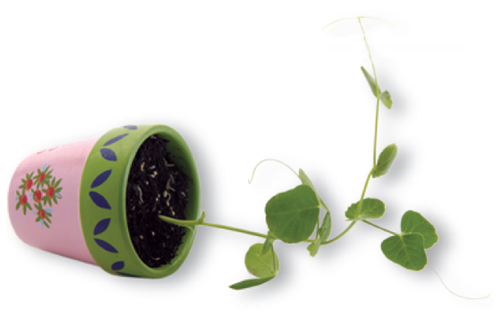

Martin Shields/Photo Researchers
12. Assess the need for plants to respond to their environment.
13. Critique the saying “one rotten apple spoils the whole barrel.”
14. Infer from the photo below where the light source is in relation to the plant.
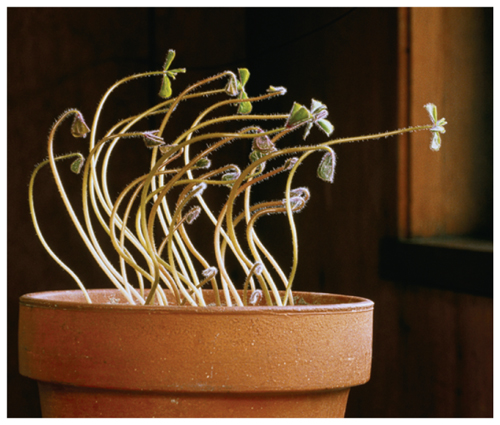

Cathlyn Melloan/Getty Images
15. Make a list of the plant processes you learned about in this lesson. How do these processes help
a plant survive and reproduce?
a plant survive and reproduce?
16. How does the process shown below help a plant survive?
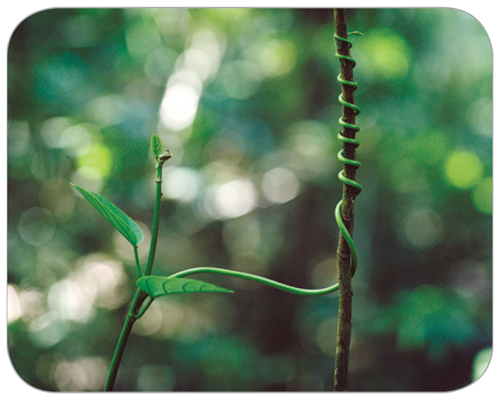

Mark Moffett/Minden Pictures
Math Skills
Use Percentages
17. When sprayed with gibberellins, the diameter of mature grapes increased from 1.0 cm to 1.75 cm.
What was the percent increase in size?
What was the percent increase in size?
18. Without treatment with gibberellins, 500 out of 1,000 grass seeds germinated. When sprayed with
gibberellins, 875 of the seeds germinated. What was the percentage increase?
gibberellins, 875 of the seeds germinated. What was the percentage increase?
19. A bunch of bananas ripens (turns from green to yellow) in 42 hours. When the bananas are placed
in a bag with an apple, which releases ethylene, the bananas ripen in 21 hours. What is the
percentage change in ripening time?
in a bag with an apple, which releases ethylene, the bananas ripen in 21 hours. What is the
percentage change in ripening time?

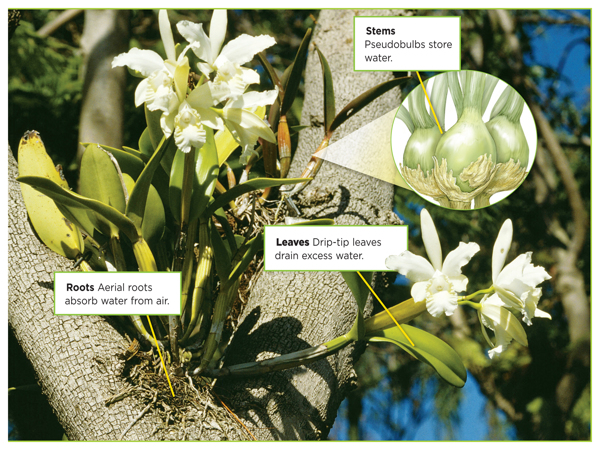
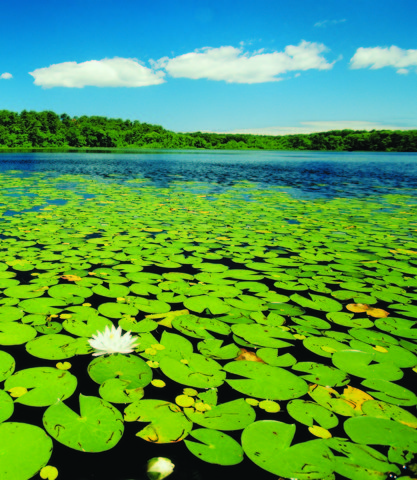



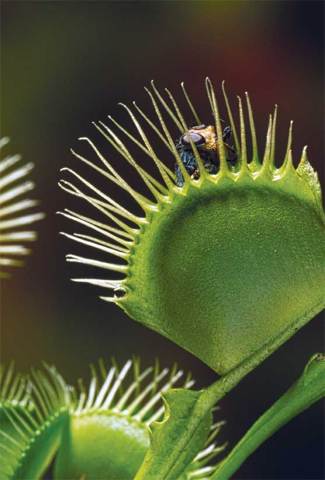
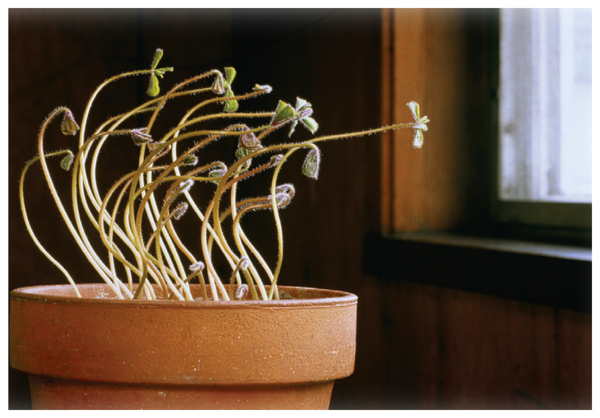
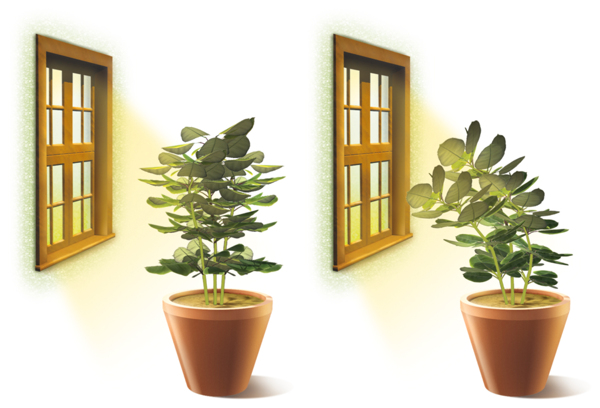
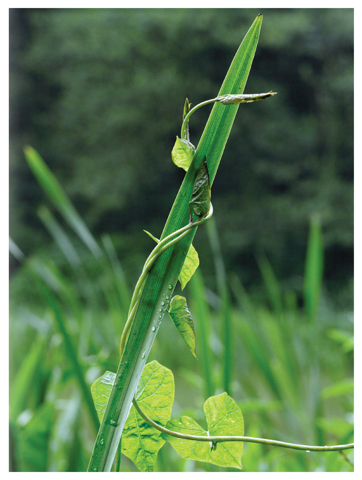
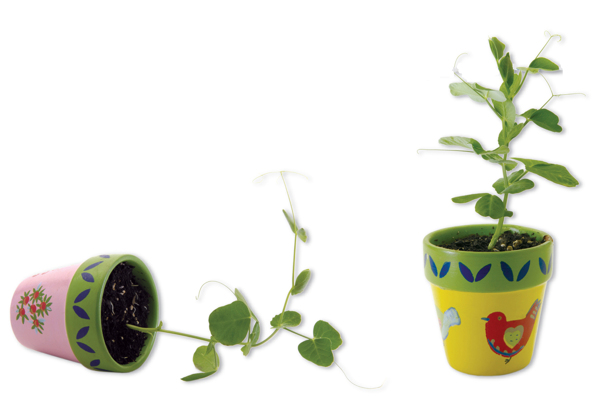
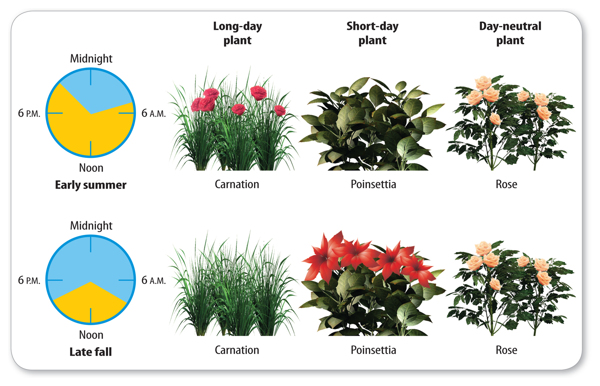
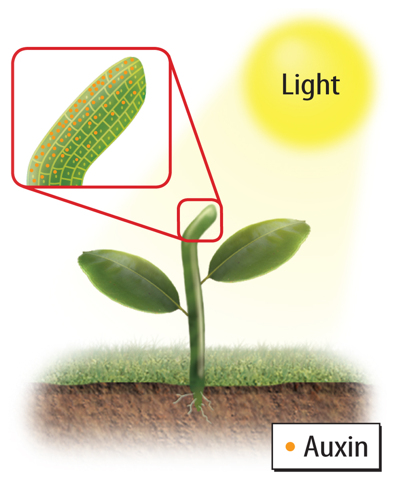
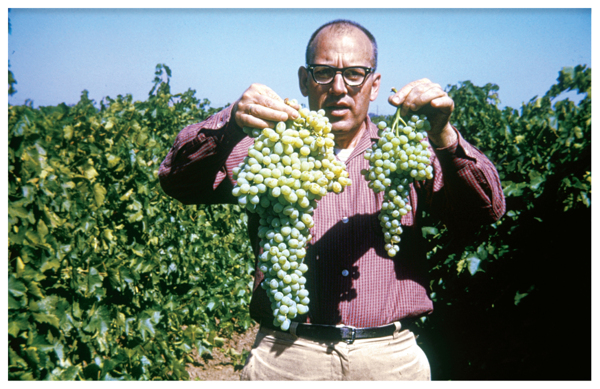
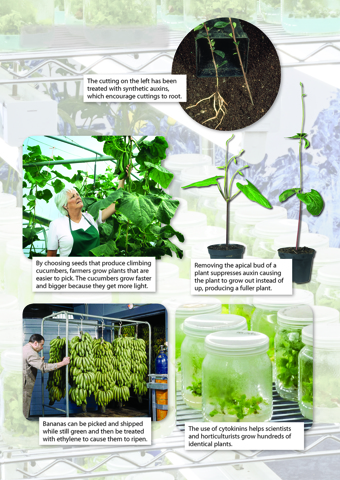
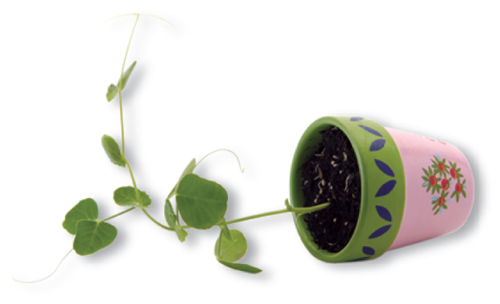
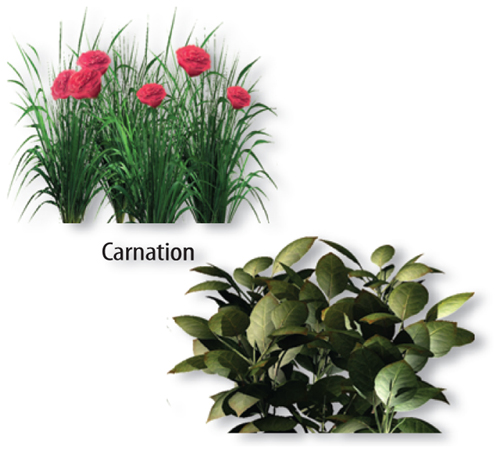
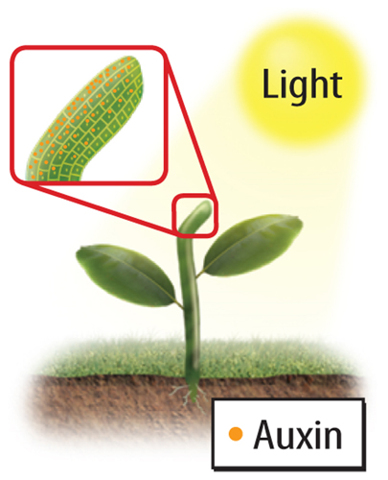
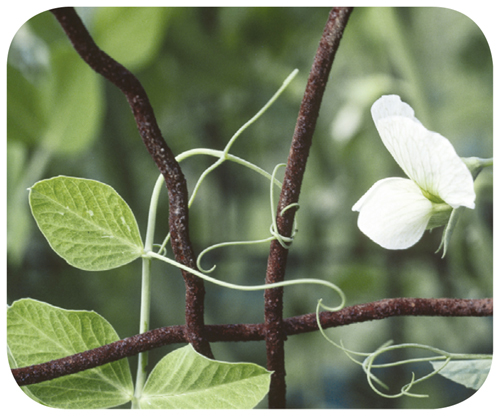
0 comments:
Post a Comment